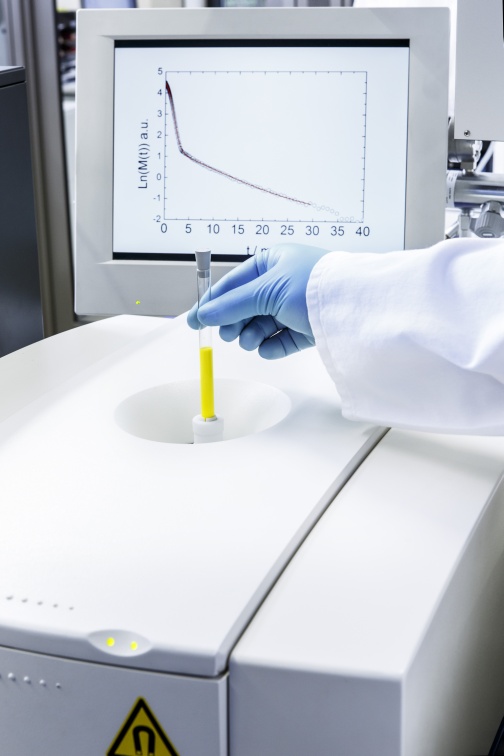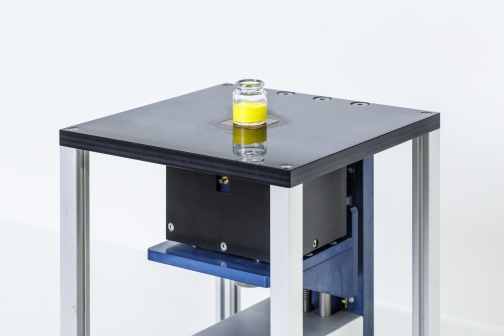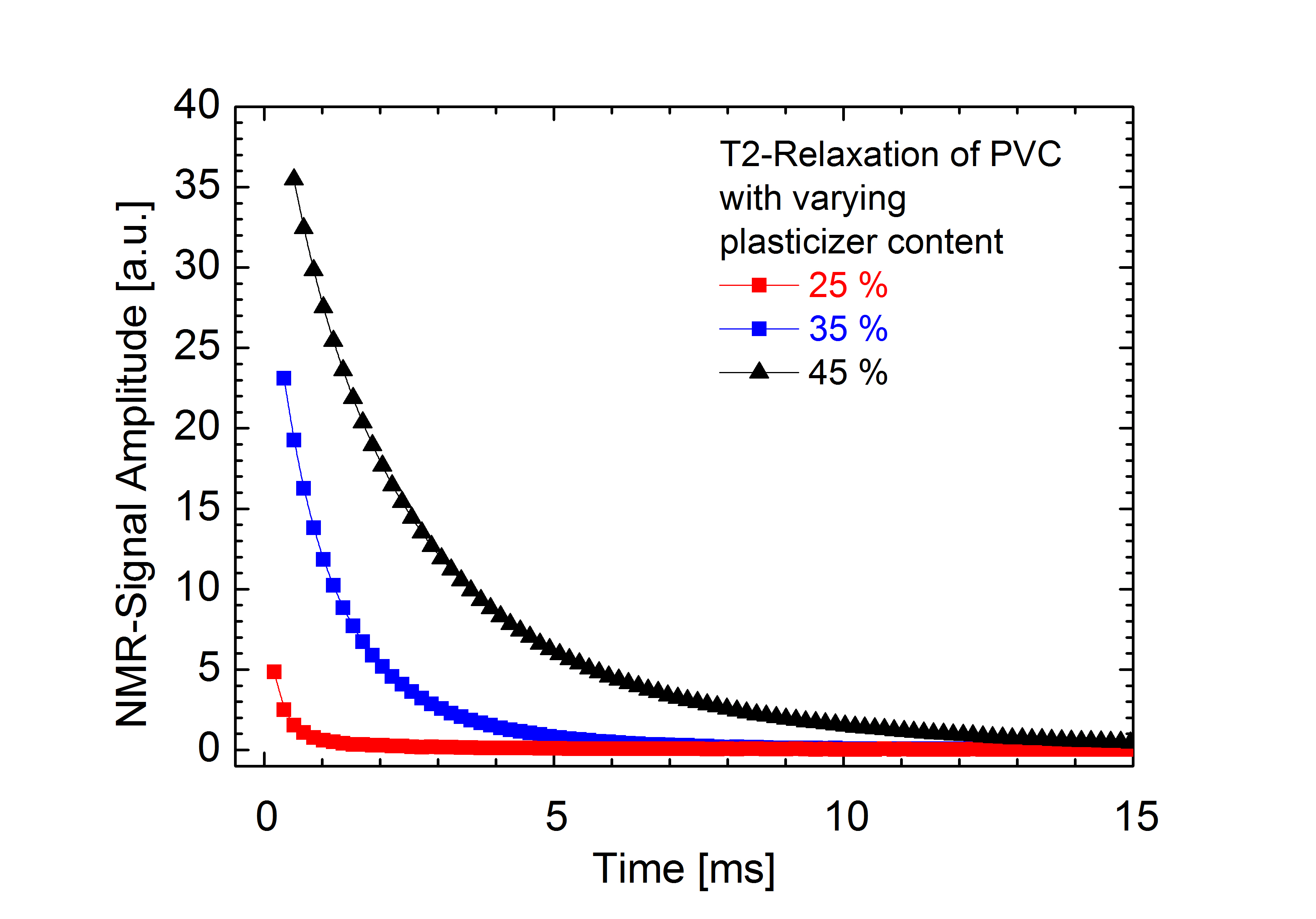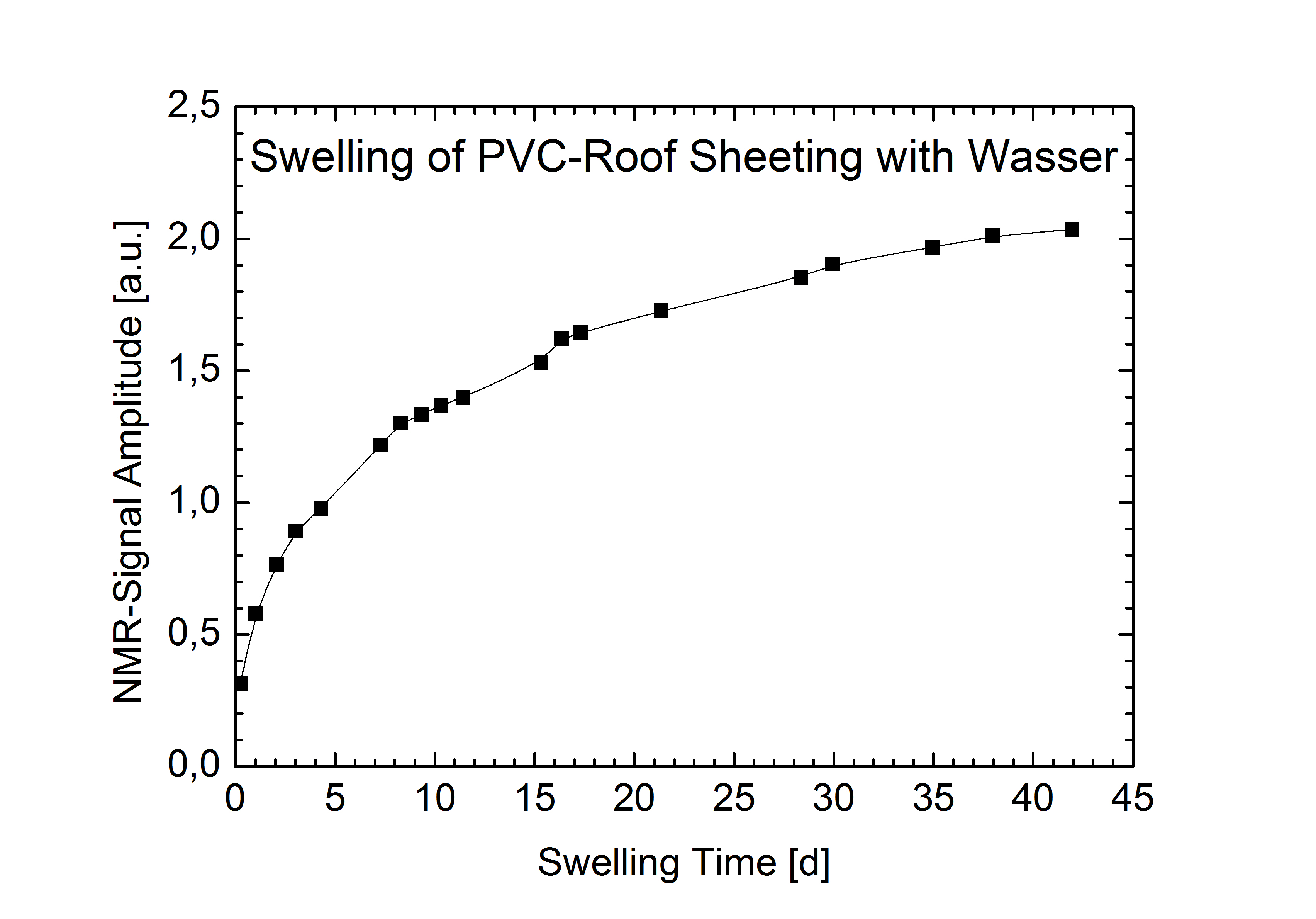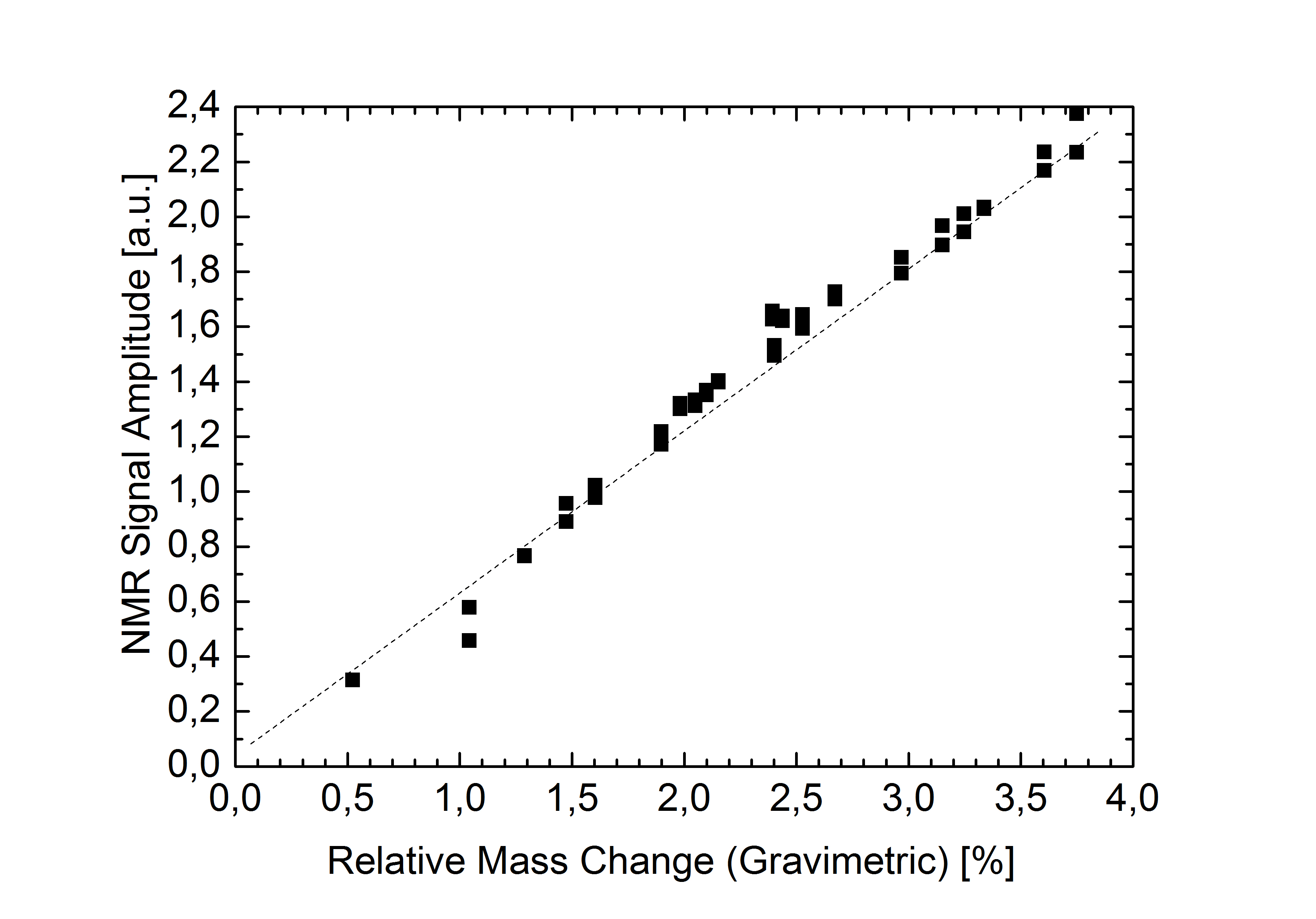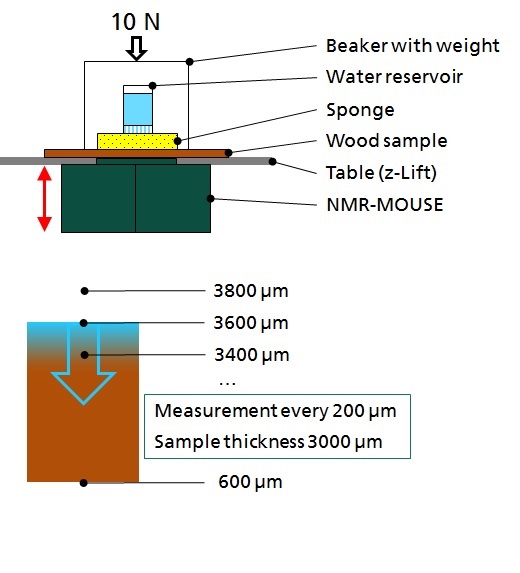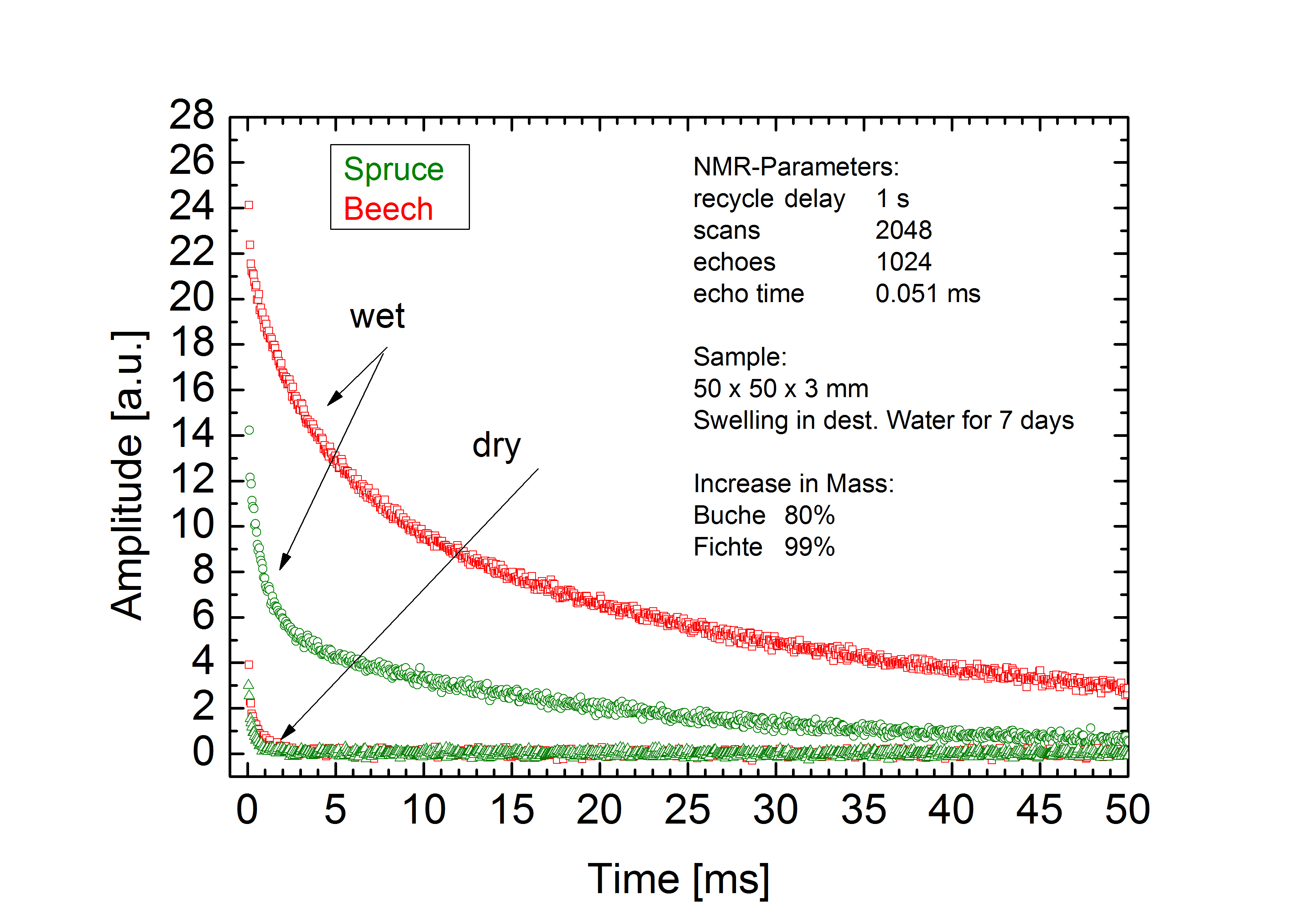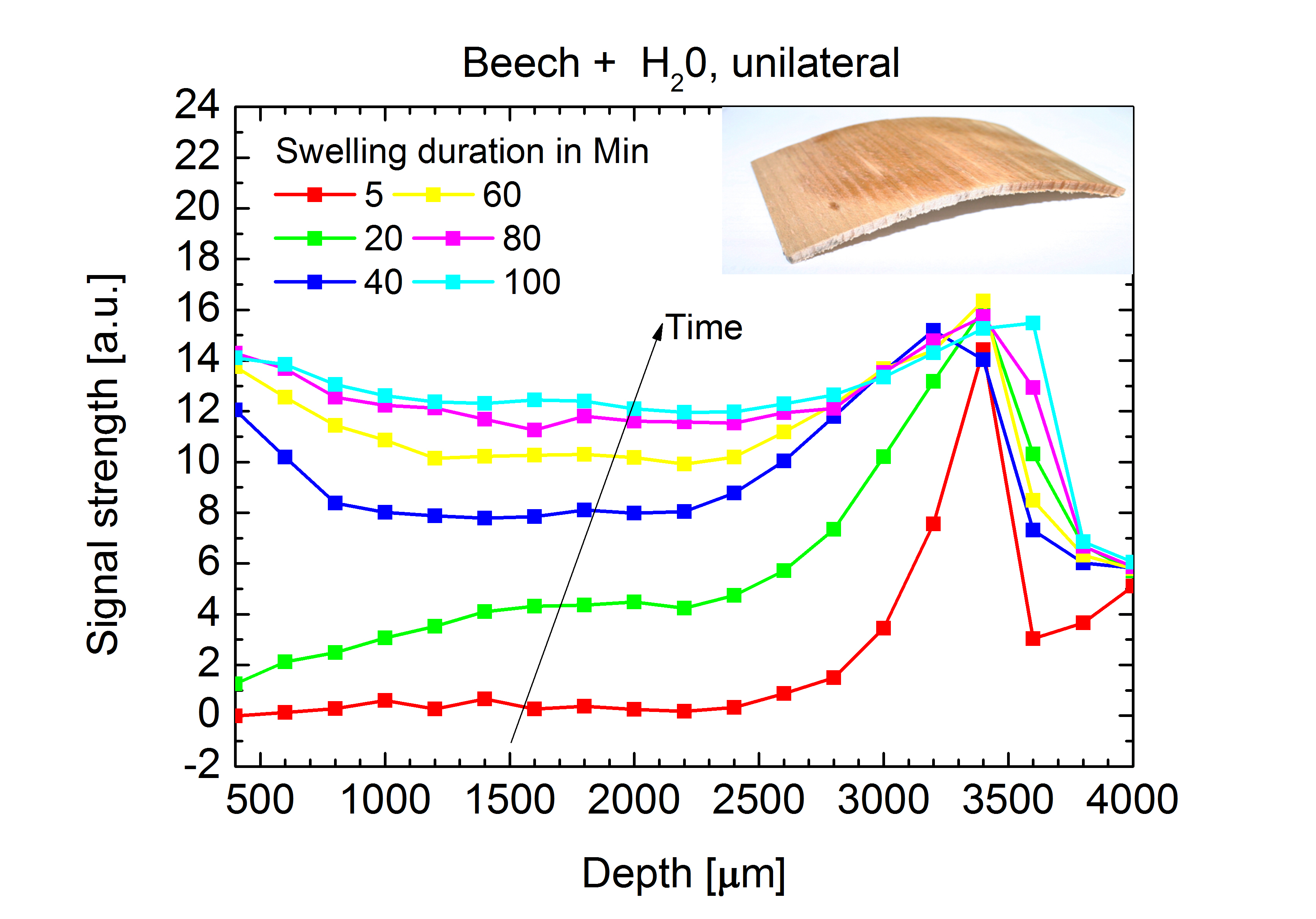Nuclear Magnetic Resonance (NMR) uses the interaction of the magnetic moment of atomic nuclei in a static magnetic field and a superimposed electromagnetic alternating field.
Low field NMR instruments for relaxation examinations (solid state NMR) use static magnetic fields in the order of one Tesla or less and operate at frequencies between 10 MHz and 50 MHz. Due to their relatively small size and easy operation, they have great potential in quality control and industrial applications. Impulse sequences such as Hahn-Echos and CPMG sequences are used. Longitudinal relaxation time (spin-lattice relaxation time) T1, transversal relaxation time (spin-spin relaxation) T2 and signal amplitudes A1 and A2 are interpreted and analyzed.
Areas of application are, for example, the examination of elastomers and rubber (e.g. cross linking density), the determination of phase compositions of polymer mixtures or the degree of crystallization of thermoplastics. Especially the content of proton rich phases such as oil, fat and water or plasticizer content in polymers can be determined. Even time and temperature dependent processes such as aging, crystallization and relaxation properties can be examined with low field NMR instruments.
Besides the described low field NMR instruments for temperature dependent relaxation examinations and the analysis of unilateral, spatially-resolved, planar test specimens (profiling), Fraunhofer LBF also has various high resolution NMR spectrometers for chemical analysis at its disposal.
 Fraunhofer Institute for Structural Durability and System Reliability LBF
Fraunhofer Institute for Structural Durability and System Reliability LBF